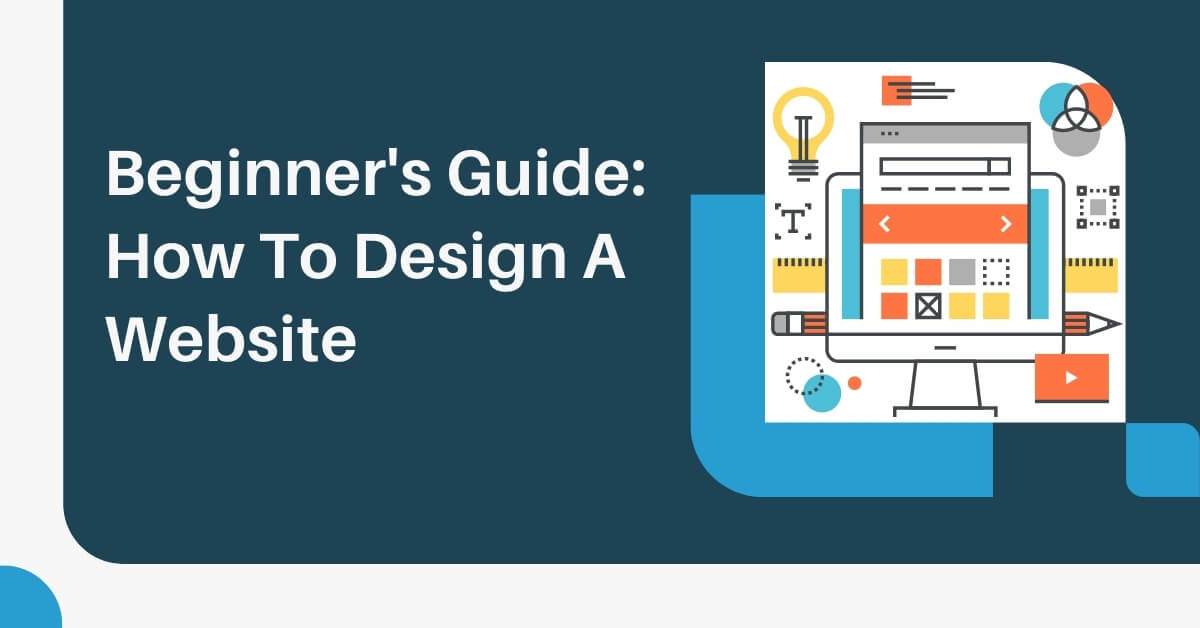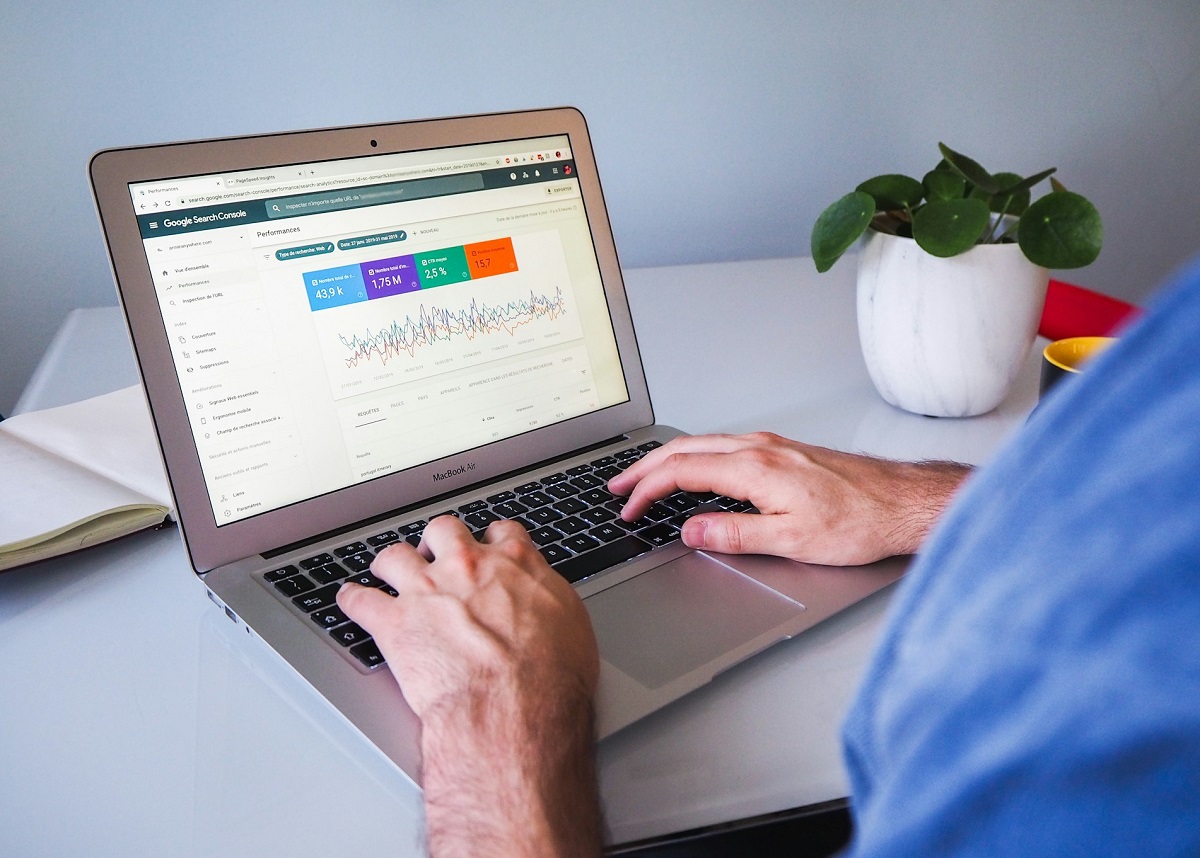
Beginner's Guide: How To Design A Website
So, finally, you are thinking of moving your business online and are all prepared to design an outstanding, attractive & appealing website, capable of showcasing what your brand is all about. But are you wondering where to start from? Don’t worry!! You are not alone. Designing a website can be a tedious & overwhelming task especially for beginners.
A lot of people think that designing a great website requires a higher level of expertise or state-of-the-art tools but let us tell you that by using the right tools, tips & technologies, anyone can accomplish this task like a pro. Our guide will show you how to design a website that converts your traffic into leads as well as optimize an effective user experience.
Maintaining an informative & user-friendly website has a great impact on your performance in search engines like Google. With so many things to take into account, the process can be daunting. To simplify it, we have prepared this guide for you. Let’s dig in:
Determine Purpose & Objective of Your Site
Before you start designing a website, you need to be clear about your site’s goal like why are you creating a website, how will it function or what benefits will the target audience get, etc. Apart from knowing your industry niche and defining a content strategy, figuring out your USP (unique selling point) is also important, such as is your site just displaying information (Blogs)? Or selling products (online store)? Or to get sign-ups to grow your business? etc. You can take a look at your competitor’s websites for design inspiration. Explore their pages and take note of the information they are providing, or how they are communicating or what they are offering to draw visitor’s attention, etc. This information will help you create a sitemap for your website.
Create Site Map
Once the purpose of your site is clear, you may want to go for the website creator as the next step but actually, it's time to site-map the website. This is one of the reasons for hiring web design services. It means determining which & how many pages your website is going to show, what the content on each page should be, and the layout of important pages such as “About Us” or “Home Page” etc. A good site map tends to include the following pages:
- Home Page - This is the main page of your website to inform your audience about your offered products & services, or your brand briefly & concisely. This is the first page a visitor will see while navigating.
- About Us - Here, customers can find the basic information about your business such as when & how you got started, mission & vision, or profiles of your team members, etc.
- Services -It can vary depending on the type of your business. It is a page with a short & simple explanation of your offered services or products with links to detailed pages to know more about them.
- Careers -If your business is open to vacancies looking for talented minds in your niche for available positions, the interesting candidates can inquire here.
- Blogs -If you want to share the latest news & updates related to your industry or services to your customers, this blog page plays a vital role.
Choose Appropriate Website Builder/ Platform
Now that you know the type of website you want to create, the next step is to choose a suitable & appropriate website creator to build your website. These website builders are the most effective ways for non-tech geeks to create their websites. Also known as CMS (Content Management Systems), a website builder is a platform where you can design, custom & publish a website without any coding expertise. Since there are plenty of platforms available in the market, we have picked up some of the most popular & best website platforms through our expert research and thorough testing. Let’s have a look:
- WordPress - Self-hosted with different hosting options like BlueHost, GoDaddy, Cloudways or DreamHost, etc, open-source CMS
- Wix - Easy-to-use drag & drop editor
- Squarespace -Best quality templates & features, Full customization control
- Weebly - Best for small businesses, customizable templates
- Shopify -Excellent inventory system, sell across multiple channels ( Facebook, Instagram, Amazon, and eBay)
- Elementor - Intuitive drag & drop editor helps create comprehensive websites
Select a Domain Name
A domain name is simply the address of your site on the internet that is visible to visitors right after “www.” Registering your domain name is essential for online survival and websites with customized domain names are automatically recognized by the customers as more professional & reliable. Make sure that it matches with your business name and should be easy for your customer to remember & type into their navigation bar. Avoid including numbers, hyphens, and other characters in domain names. It should be easily accessible to your visitors.
Pick a Theme/Template
After signing up for your website platform & registering with a domain name, start browsing several themes/templates for your website design. It is simply referred to as the layout of your site. Take a look at your competitors to pick out the best themes or layouts. Though each website seeks plenty of customization to showcase your brand & web pages, templates could be a good starting point. Most platforms allow you to choose from a range of templates that come with built-in features. Each other website platform will help you activate the theme internally that is relevant to the industry, saving your time & efforts of adding them in later.
Write a Website Copy/Add-In Content
As you have already decided the pages your website is going to showcase to the visitors through site mapping, the next step is to write your website copy. If you want your website copy capable of drawing visitors’ attention, you can hire content writing services. Also, follow these tips:
- Keep it short, simple & to-the-point
- Create according to your target audience in mind and write in a convincing way to take the action.
- Bold important keywords or phrases in the paragraphs to make them stand out among visitors.
- Don’t forget to include keywords. Focus on a single keyword for each landing page to get ranked higher on Google
- Include calls-to-action buttons in every section or at the bottom of the page to make users sign up, or learn more, etc.
Hire Freelancers/Professional Agency
If you want to create robust, scalable, & professional websites for your potential leads with accelerated control over the look & functionality, hiring freelancers or professional web designing services is a great idea. They not only provide cost-effective services but you can also take the benefits of these expert industrial professionals’ years of experience & knowledge to transform your ideas into reality. Just tell them their requirements and you can save your time to focus on your other important tasks.
Add Navigation Option
Your website navigation is one of the most important elements that decide whether your website will function properly or not. Your navigation can help your visitors in a variety of ways such as it can help them find what they are looking for, or give them access to the important web pages on your site by placing direct links on the top of the home page. If visitors can’t navigate, they will leave the site. You can use a search bar to assist users in quickly navigate to a specific page or item they want to discover without having to click on navigation options. Or use a menu icon (☰) at the top left corner of the page is also a great idea.
Research Latest Web Design Trends
Be it making your website stand out from your competitors and establishing the reliability of your brand among your target audience with a good impression, researching the key web design trends 2021 is highly recommended. Regardless of the industry, follow these website design trends to keep your customer engaged by making your website pleasing and equipped with all the relevant information about your business. So take your time and look at what your competitors are doing. Some of the major design trends include:
- Retro font
- Parallax scrolling
- Black & pastel colors
- Custom illustrations & many more.
Determine Your Branding
While designing a website, you should create a strategy about how everything you are doing is going to relate to your brand. Ranging from color scheme to font style, design & images, all play an important role in telling your brand’s story. So it is important to be consistent with whatever Font, Color Palette, Image Theme, and Design Options you choose. It is quite absurd to use one color scheme for the “About Us” page and a completely different scheme for the “Home” page.
Make Your Website Responsive Ie. Mobile Friendly
This is the most important step you cannot neglect while creating a website. Today, maximum internet browsing takes place on mobile and that’s why Google also favors mobile-friendly websites. If your site doesn’t run on the phone, you are losing a serious opportunity. Your website needs to provide a seamless browsing experience across all devices by optimizing its responsiveness.
Launch Your Website
Finally, now you can launch your website after fulfilling all the above-mentioned criteria. Publish your site, add social media links and start marketing now. To track its performance and get a higher rank on Google, you can hire professional SEO services. They help you create an effective digital marketing plan to grow traffic on your site and bring in new customers.
Now you know everything about how to design a website through this guide. Websites are the face of your brand and if you want to grow your business with maximum customers, creating a stunning website is essential.







 +91-8824414404
+91-8824414404